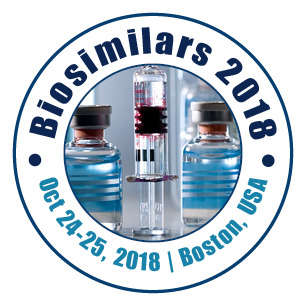
Fancois Xavier Frapaise
Biosimilars Consultant Paris, France
Title: The end of clinical trials in biosimilars development
Biography
Biography: Fancois Xavier Frapaise
Abstract
In his book, “The End of History?”, published in the National Interest in 1992, Fukuyama argues that the advent of western liberal democracy may signal the endpoint of humanity's sociocultural evolution and the final form of human government. In the same vein, based on recent development of sophisticated analytical methods and evolution of regulatory guidance, one should discuss the relevance of the current clinical development model for biosimilars and raise the following long-term questions: is it the end of clinical trials in biosimilar development,” or more realistically, “could we, in the foreseeable future, drastically reduce the financial and operational burden of biosimilars clinical trials?” It is well known that proteins have unique structural organisation patterns and even those that are chemically identical may have different biological effects due to structural folding differences, without mentioning the effect of post-translational modifications. However, with the current exponential development of multiple sophisticated analytical methods enabling comparability assessment between originators and candidate biosimilars both structurally (orthogonal methods) and functionally (compound-dependent), considering the lack of sensitivity of many clinical models to detect meaningful differences between follow-on biologics and reference compounds, and the recent evolution of regulators perspective on this matter, the relevance of the current clinical development model should be legitimately questioned. Even if this is not ready for prime time, we observe, through the interaction with regulators, that current trends are compatible with this possible long-term perspective, namely: the reliance on healthy volunteer PK/PD studies only to support some biosimilar compounds registration (without testing the candidate biosimilar in oncology patients), wider acceptance by the FDA/EMA of extrapolation from one indication to all other approved indications of the reference compound (e.g. infliximab), and agencies’ willingness, if not encouragement, to test clinical biosimilarity in non- approved indications of the originator compound! When one considers the financial and operational burden of running pivotal trials based on clinical endpoints (skeletal-related events) in some indications (e.g. osteoporosis, metastatic prostate cancer), the likely acceptability of surrogate markers (BMD in osteoporosis), one can predict that clinical trial designs and endpoints for biosimilars are likely to significantly evolve in the coming years. However, one important question remains open, at least for immunogenic compounds (e.g. adalimumab), namely the opportunity to predict immunogenicity based on non-clinical models.


